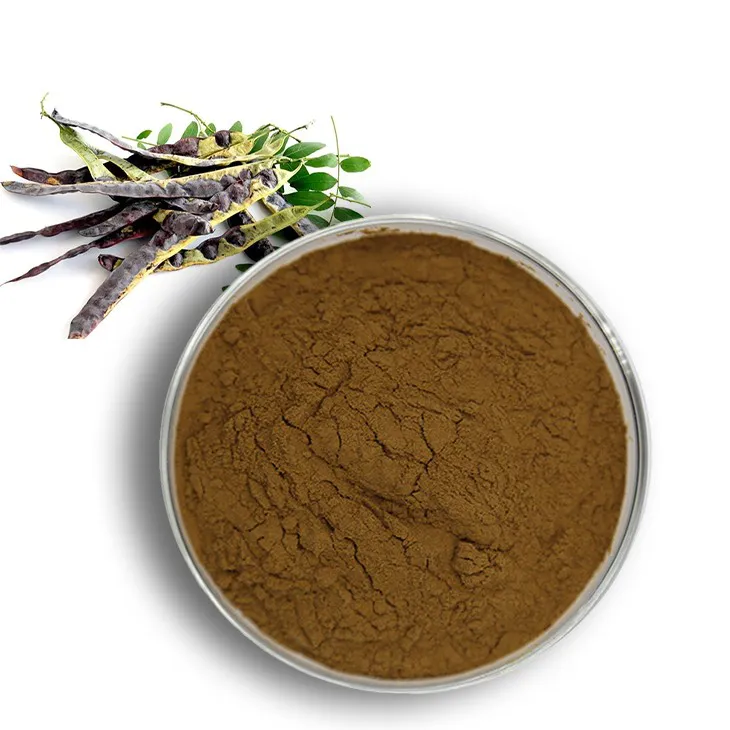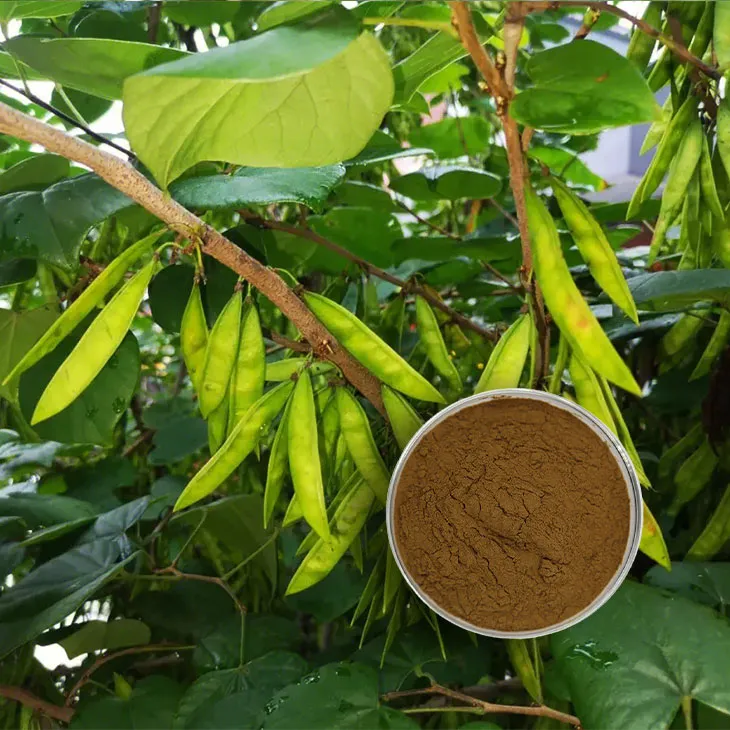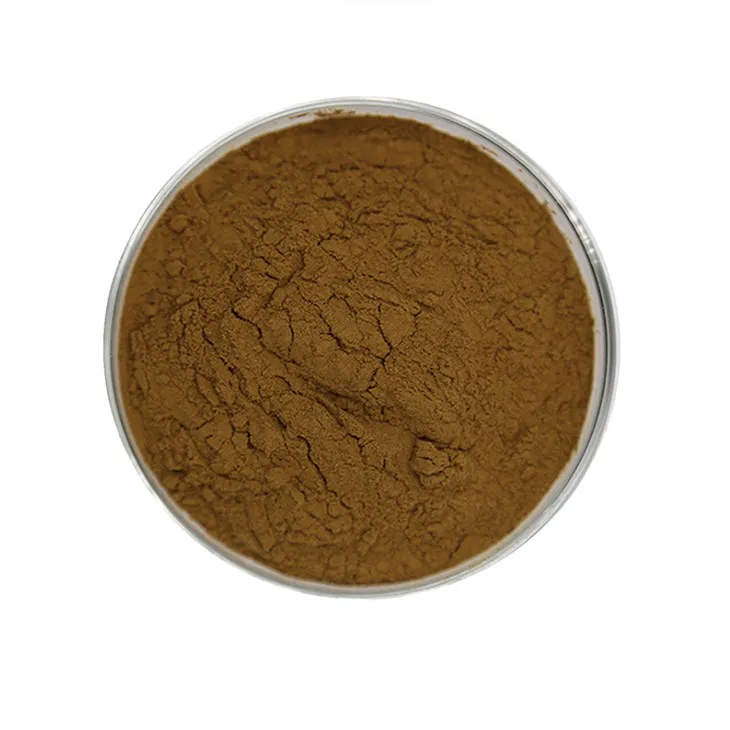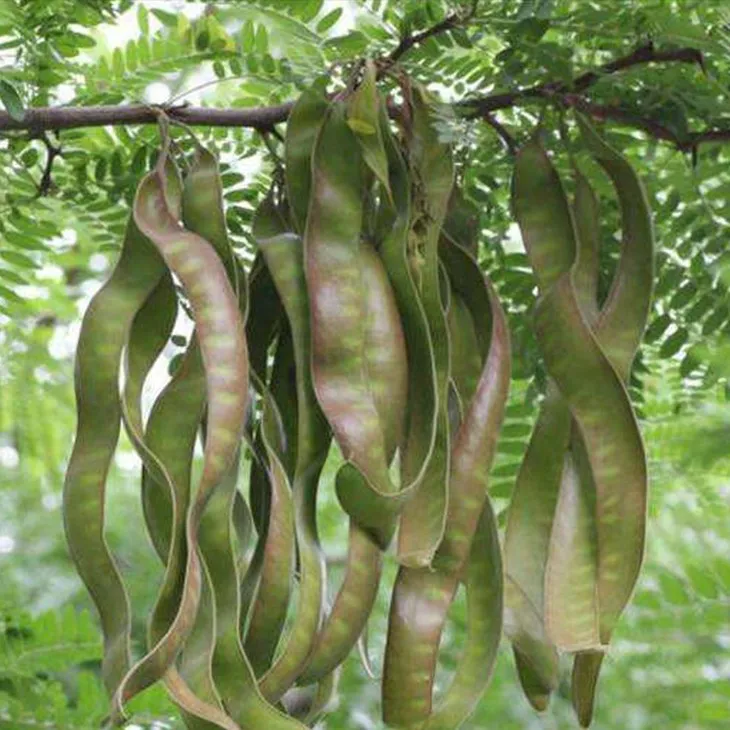- 0086-571-85302990
- sales@greenskybio.com
The best saponin extract on the market.
2024-11-30

Introduction to Saponin Extracts
Saponin Extracts have been gaining significant attention in various fields due to their unique properties. Saponins are a class of natural compounds that are widely distributed in the plant kingdom. They are characterized by their foaming properties when shaken in aqueous solutions. These compounds are structurally diverse, consisting of a steroid or triterpenoid aglycone (the non - sugar part) linked to one or more sugar moieties (the glycones).

Source of High - Quality Saponin Extracts
Plant Species
The best saponin extracts often originate from carefully chosen plant species. For example, ginseng is a well - known source of saponins. Ginseng saponins, also known as ginsenosides, have been studied extensively for their potential health benefits. Another important source is licorice, from which glycyrrhizin, a type of saponin, is obtained. Licorice saponins have been used in traditional medicine for a long time and are now being explored further in modern medicine.- Some plants from the legume family also contain high - quality saponins. These saponins may play a role in plant defense mechanisms against pests and diseases.
- Quinoa, a popular pseudo - cereal, contains saponins on its outer layer. Although these saponins need to be removed for human consumption in most cases, they can be a valuable source for extraction in other applications.

Medicinal Benefits of Saponin Extracts
Cardiovascular Health
Saponin extracts have shown promise in improving cardiovascular health. Some saponins may help in reducing cholesterol levels. For instance, certain plant - based saponin extracts can interfere with the absorption of dietary cholesterol in the intestine. This can lead to a decrease in low - density lipoprotein (LDL) cholesterol, which is often referred to as "bad" cholesterol.- They may also have antioxidant properties that protect the cardiovascular system from oxidative stress. Oxidative stress can damage blood vessels and contribute to the development of heart diseases.
- Some saponin - containing plants have been associated with improving blood circulation. This can be beneficial for patients with conditions such as hypertension or peripheral vascular disease.
Immune Function
The impact of saponin extracts on immune function is another area of great interest.- Some saponins can stimulate the immune system by enhancing the activity of immune cells such as macrophages. Macrophages play a crucial role in the body's defense against foreign invaders like bacteria and viruses.
- They may also modulate the immune response, helping to balance the over - or under - active immune system. This is particularly important in autoimmune diseases where the immune system mistakenly attacks the body's own tissues.

Manufacturing and Quality Control of Saponin Extracts
Extraction Process
The extraction of saponin extracts is a complex process. Different methods can be used depending on the source plant and the desired properties of the extract.- One common method is solvent extraction. In this process, solvents such as ethanol or methanol are used to dissolve the saponins from the plant material. The choice of solvent is crucial as it can affect the yield and quality of the extract.
- Supercritical fluid extraction is another advanced technique. This method uses supercritical fluids, such as supercritical carbon dioxide, which has properties between those of a gas and a liquid. It can provide a more selective extraction and often results in a purer extract.
Purification and Quality Assurance
After extraction, purification steps are necessary to obtain a high - quality saponin extract.- Chromatographic techniques, such as high - performance liquid chromatography (HPLC), are often used to separate and purify the saponin components. HPLC can accurately identify and quantify different saponins in the extract.
- Strict quality control measures are implemented throughout the manufacturing process. This includes testing for contaminants such as heavy metals, pesticides, and microbial contaminants. Only extracts that meet the required quality standards are released to the market.

Applications of Saponin Extracts in Agriculture
Natural Pesticides
Saponin extracts can serve as natural pesticides.- They can disrupt the cell membranes of pests, leading to their death. This mode of action is different from many synthetic pesticides, which may reduce the risk of pests developing resistance.
- Since they are natural compounds, they are generally considered more environmentally friendly. They can be degraded more easily in the environment compared to some synthetic pesticides.
Plant Growth Promotion
There is also evidence that saponin extracts may have a role in promoting plant growth.- Some saponins can act as allelopathic agents, which means they can affect the growth of neighboring plants. In some cases, they can inhibit the growth of weeds, giving the target plants a competitive advantage.
- They may also enhance nutrient uptake in plants. For example, by interacting with the root system, saponins can help plants absorb nutrients such as phosphorus more efficiently.
Research and Development of Saponin Extracts
Optimizing Extraction Methods
Continuous efforts are being made to optimize the extraction methods of saponin extracts.- Researchers are exploring new solvents and extraction techniques that can improve the yield and quality of saponin extracts. For example, the use of ionic liquids as solvents is being investigated for their potential to extract saponins more efficiently.
- Combination extraction methods, such as using a combination of solvent extraction and enzymatic hydrolysis, are also being studied. This approach may break down the plant cell walls more effectively, allowing for better saponin extraction.
New Applications
In addition to the existing applications, new areas of application for saponin extracts are being explored.- There is interest in using saponin extracts in the cosmetic industry. Their potential antioxidant and skin - conditioning properties make them suitable candidates for use in skincare products.
- Some studies are looking into the use of saponin extracts in the food industry as natural preservatives or functional ingredients. For example, they could be added to food products to enhance their health - promoting properties.
Conclusion
Saponin extracts are a fascinating class of natural compounds with a wide range of potential applications. The search for the best saponin extract in the market is driven by their numerous benefits, including in medicine, agriculture, and potential new applications in other industries. With continuous research and development, it is expected that the quality and utilization of saponin extracts will continue to improve in the future.
FAQ:
What are the main plant sources for high - quality saponin extracts?
Some common plant sources for high - quality saponin extracts include ginseng, licorice, and quinoa. Ginseng is well - known for its various health - promoting saponins. Licorice contains glycyrrhizin, a type of saponin with multiple pharmacological effects. Quinoa also has saponins on its outer layer which have potential health benefits.
How do strict quality control measures affect saponin extract quality?
Strict quality control measures during extraction and purification are crucial for saponin extract quality. These measures ensure that the extract is free from contaminants such as heavy metals and pesticides. They also help in maintaining a consistent concentration of saponins. By controlling factors like temperature, pH, and extraction time precisely, the purity and potency of the saponin extract can be optimized.
What are the specific mechanisms by which saponin extracts improve cardiovascular health?
Saponin extracts can improve cardiovascular health through several mechanisms. Some saponins may help in reducing cholesterol levels by interfering with cholesterol absorption in the intestine. They can also have antioxidant effects, which protect the blood vessels from oxidative stress. Additionally, certain saponins may modulate blood pressure by influencing the function of blood vessels and the renin - angiotensin system.
How are saponin extracts used as natural pesticides in agriculture?
Saponin extracts can act as natural pesticides in agriculture. They can disrupt the cell membranes of pests, leading to their death. Saponins are often toxic to insects, nematodes, and some fungi. They can be applied directly to the plants or soil. Some plants with high saponin content are used in crop rotation or intercropping systems to naturally repel pests.
What are the challenges in optimizing saponin extraction methods?
There are several challenges in optimizing saponin extraction methods. One challenge is the complexity of plant matrices. Different plants have different cell structures and compositions, which can make it difficult to develop a universal extraction method. Another challenge is the degradation of saponins during extraction. Saponins can be sensitive to factors like heat, light, and pH. Also, cost - effectiveness is an issue. Developing extraction methods that are both efficient and affordable can be a struggle.
Related literature
- Saponin - Rich Plants: A Source of Bioactive Compounds"
- "The Role of Saponins in Cardiovascular Health: A Review"
- "Optimization of Saponin Extraction from Medicinal Plants"
- "Saponins as Natural Pesticides: Current State and Future Prospects"
- ▶ Hesperidin
- ▶ Citrus Bioflavonoids
- ▶ Plant Extract
- ▶ lycopene
- ▶ Diosmin
- ▶ Grape seed extract
- ▶ Sea buckthorn Juice Powder
- ▶ Fruit Juice Powder
- ▶ Hops Extract
- ▶ Artichoke Extract
- ▶ Mushroom extract
- ▶ Astaxanthin
- ▶ Green Tea Extract
- ▶ Curcumin
- ▶ Horse Chestnut Extract
- ▶ Other Product
- ▶ Boswellia Serrata Extract
- ▶ Resveratrol
- ▶ Marigold Extract
- ▶ Grape Leaf Extract
- ▶ New Product
- ▶ Aminolevulinic acid
- ▶ Cranberry Extract
- ▶ Red Yeast Rice
- ▶ Red Wine Extract
-
Mangosteen extract powder
2024-11-30
-
Resveratrol extract
2024-11-30
-
Fenugreek Extract Powder
2024-11-30
-
Gynostemma pentaphyllum extract
2024-11-30
-
Bilberry Extract
2024-11-30
-
Stevia Extract
2024-11-30
-
Saw Palmetto Extract
2024-11-30
-
Hops Extract
2024-11-30
-
Lemon Extract
2024-11-30
-
Passionflower Extract
2024-11-30





















